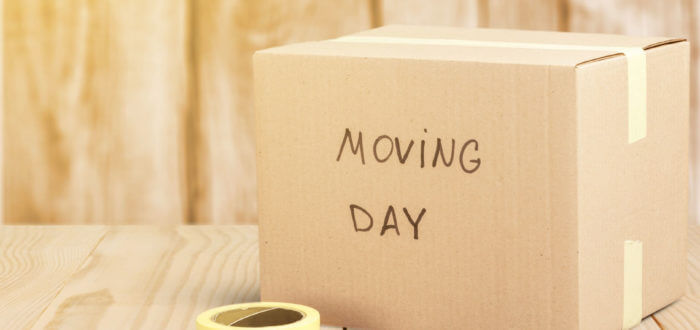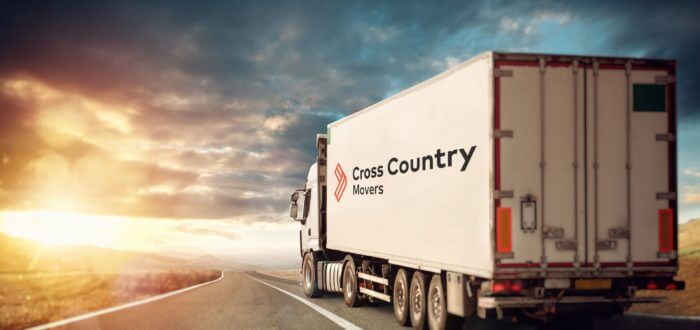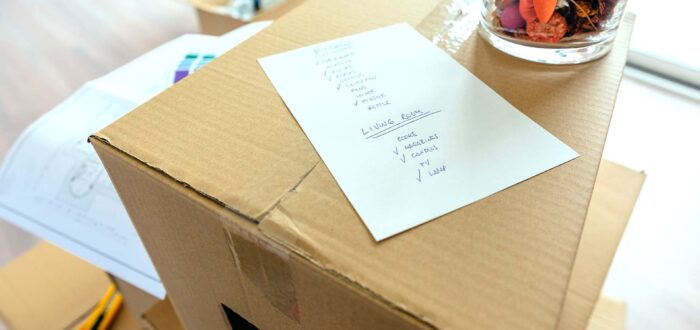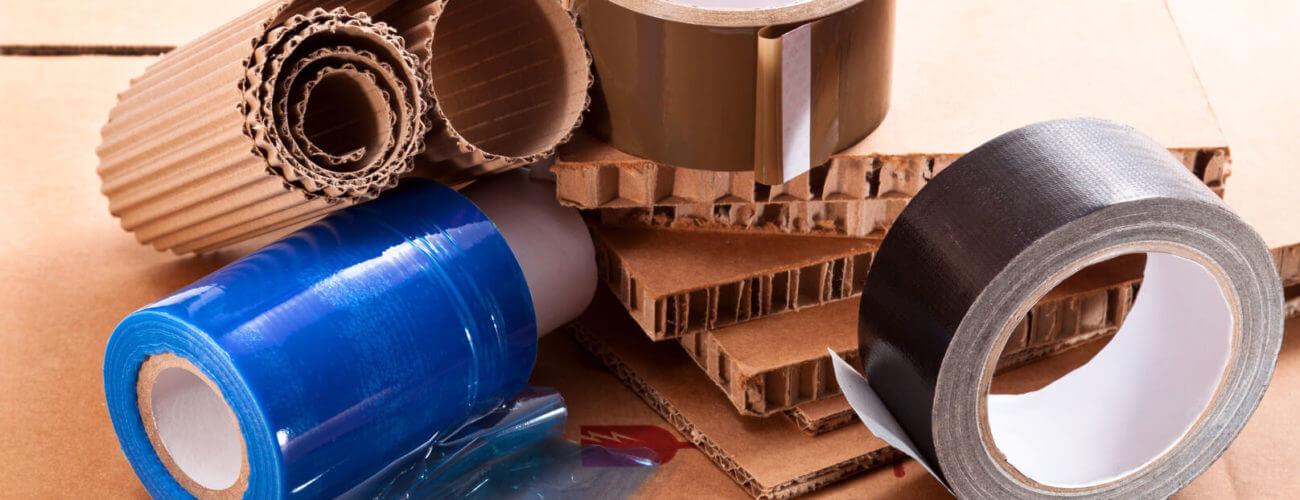

Ultimate List of Supplies and Packing Materials for Moving
Posted in Planning the Move on April 19, 2022
One of the main relocation goals is to get your belongings from point A to point B undamaged, and choosing the right packing materials for moving plays a huge role in it. So you can enjoy all of your belongings in the time after the move, find out how to protect them the best way.
Booking professionals can put you out of your misery when it comes to searching and gathering suitable boxing up materials – when getting professional packing services, movers are usually those responsible for getting boxes and packing supplies. However, if it’s not a possibility at the moment, our comprehensive checklist will teach you all about the necessary materials and how to make the best choices for your relocation.
When Considering Basic Packing Materials for Moving, Think Cardboard
No matter if you are packaging fragile items or want to pack shoes, cardboard is one of the relocation essentials you must get. When picturing any kind of relocation, it’s probably one of the first things people think of. Moreover, they are needed for more than just belongings you decide to bring to your new home. When decluttering and sorting what to get rid of and what to keep, you’ll also need storage space for all those belongings you want to donate, sell or recycle.
The real question is not whether you require cardboard but which kind to pick. Believe it or not, there is a science behind choosing the right type of cardboard for your move, especially when it comes to the size and number. The right amount will depend on several different factors – whether you’re relocating to another state alone or with family, for example, or what kind of stuff you have on your household inventory list.
Although the numbers can vary from one household to another, the table below offer the approximate amount of different-sized boxes per square foot, so let it be your starting point:
| 400-700 sq. ft | 700-1250 sq. ft | 1250-1700 sq. ft | 1700-2200 sq. ft | |
|---|---|---|---|---|
| Small | 7-15 | 17-23 | 32-37 | 38-42 |
| Medium | 9-15 | 15-22 | 25-35 | 36-47 |
| Large | 6 | 7-11 | 16-20 | 21-26 |
| Extra large | 3 | 4-6 | 10-12 | 13-15 |
Keep in mind that you should store heavy belongings in small cartons, while larger ones should be reserved for lighter objects. The reasoning behind it is simple – if you want to pack books, for example, you’ll lift a smaller box much easier than if you fill a large one with them.
Specially Designed Cardboards, Such as Wardrobe Boxes and Dish Barrels, Will Ease the Relocation Process
If you want to ensure the maximum protection when packaging dishes and other fragile objects, consider getting a dish barrel box (or a few of them) – barriers you can find in them serve to keep the object in place as well as minimize the contact with other dishes in the box. They are an excellent solution, especially when you want to pack china and other of your valuable belongings completely damage-free.
Wardrobe boxes, on the other hand, will help you move efficiently. Instead of folding and packaging clothes in many different packages, all you have to do is transport them all together with the hangers onto the wardrobe bar already installed in the carton and seal it. However, note that they cost more than regular cardboard.
Basements, Forums, or Stores – Where to Find Free Boxes?
Yes, there is such a thing as free boxes, as long as you know where to look. Consider the following places:
- Storage rooms (attics, basements, garages) – more likely than not, you have some cardboard stored at your home from old electronics, shoes, and objects alike. The same thing goes with your friends and family. Don’t hesitate to ask people you’re close with if they have some.
- Online world – you can ask for used cardboard on forums and social media or even visit online marketplaces such as Freecycle. Eco-friendly behavior has become much more popular over the years, and many people look to recycle the material they no longer need instead of wasting it.
- Local stores, bars, and restaurants – in most cases, they just end up throwing out unneeded cardboard. Therefore, visit places such as local bookstores, retails, and liquids stores and ask for spare cartons they do not require anymore.
However, keep in mind that all of these boxes will most likely be already used and, therefore, won’t have the same quality and strength as the new ones. That is why they should be used for less valuable and breakable belongings – try not to utilize them when packaging kitchen items, for example.
Be Smart and Creative When It Comes to Wrapping and Padding Material
Cardboard is not the only material required for protection – you must also think about which materials to utilize for proper padding and wrapping before shipping. Even more, if you plan on using storage services, you should consider which materials are the best for protecting items in storage units.
Packing paper, stretch, and bubble wrap are all excellent choices. You can utilize them all for most of your household goods, but when it comes to packaging glasses, mirrors, lamps, and other breakable objects, bubble wrap takes a slight lead.
On the other hand, the stretch and bubble wrap are made of plastic, which is not exactly what you would call an environmentally friendly supply. Therefore, if you don’t want to create plastic waste, paper can be a good choice – as long as you are familiar with some long-distance moving tips on how to use it to get the best results.
All of the materials mentioned above can be used for padding, as well. However, air pillows and foam peanuts are materials specially designed for this purpose. Still, neither of them is good for the environment, so if you’re environmentally conscious, stick to the paper.
Cost-Effective Wrapping and Packing Supplies for Moving
If you have a limited relocation budget when moving across the country, keep in mind that some of your household goods can be excellent substitutes for professional but costly packaging materials. Think about:
- Suitcases, duffle bags, plastic containers, or even garbage bags – these are all good storing spaces for objects that do not need extensive protection.
- Coton materials such as old T-shirts, kitchen cloths, linens, towels, bedding, and even socks – they are not only good substitutes for professional wrapping and padding materials but are also the most eco-friendly of them all.
- Newspapers – obvious alternative to packing paper, but note that the black ink could transfer your household goods, so don’t utilize them for the pieces of significant value, financial or sentimental.
Bonus tip: If you’re having a last-minute move and do not have enough time to gather everything you need for boxing up, consider not removing objects from dressers and desks. Just make sure your long-distance movers are willing to transport them that way.
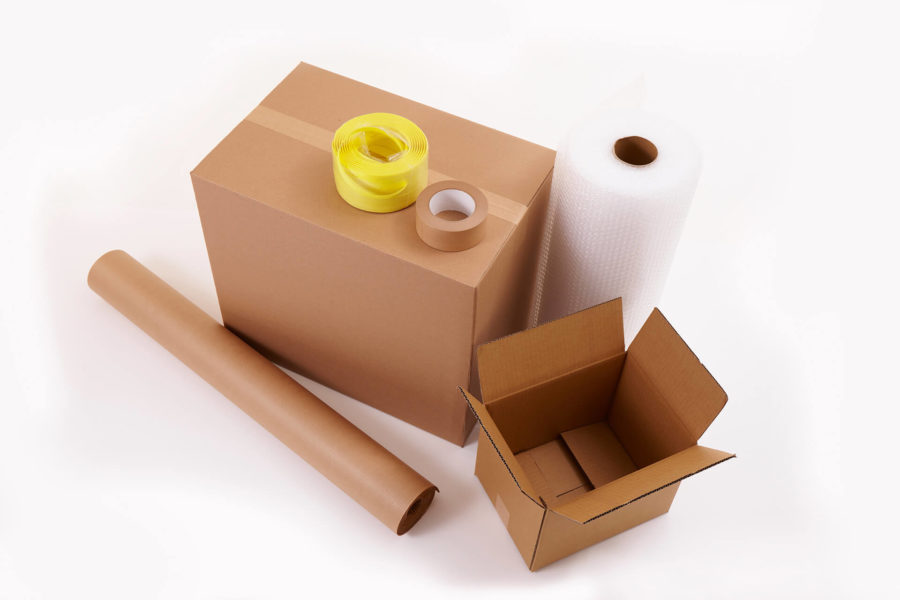
Relocation Blankets Will Protect Large Objects the Best
Up until now, we talked about boxable belongings, but do you know how to protect bulkier objects? Several choices lie ahead – you can utilize old household goods (linens and other stuff mentioned above), try covering them with stretch, or buy relocation blankets. Although the costliest, the heavy-duty blankets should provide the best protection and can be used for all of your furniture, appliances, and other bulky objects.
All you have to do is palace them over the object in question and secure them with a rope, tape, or any similar item. If you’re using tape to keep the blankets in place, make sure it doesn’t come in contact with surfaces such as wood or leather because it can damage them.
What Equipment Do You Need for Relocating Heavy Belongings?
When organizing your move, you must also think about the equipment you need to relocate large household objects. The simple solution is in sliders – they will allow you to push the object without heavy lifting. However, keep in mind that you can also utilize homemade sliders, such as rugs and towels for hardwood, or frisbees and plastic lids for rooms with carpets.
However, even with sliders, relocating large objects will still be hard work. Therefore, the better option is to rent specially designed equipment such as dollies or relocation straps. With them, relocating even the bulkiest objects will be much easier.
Do you know how lifting straps work? If you’re not entirely certain how to utilize them the best, make sure you watch the following video:
For the Best Result, Let the Professionals Handle All the Heavy Lifting
When you’re considering the DIY approach for relocating to a new home, don’t make a final decision before hearing the movers’ offer. Keep in mind that some of the most reliable relocation companies consider preparing and protecting furniture, appliances, and other large belongings a part of standard cross-country moving services.
That means hard physical work, as well as equipment expenses, won’t be up to you, even if you opt against packing service. Therefore, if you have a place for professional help inside of your budget, don’t think twice about getting it.
Don’t Forget the Additional Packing Material for Moving
One of the most common relocating mistakes is forgetting the additional supplies necessary for successful packaging. Before the boxing up time comes, ensure you have prepared:
- Tape – you’ll need it for sealing the cartons, securing the wrapping material, and keeping relocation blankets in place,
- Scissors – most of us have them in our home, but don’t lose precious time and nerves trying to find them when you need them the most,
- Labeling products – it can be something simple as a black marker, or you can use a more complex, color-coding system, for which you need adequate materials,
- Zip bags – so you don’t lose all the tiny parts of your furniture, such as screws and hinges, place them inside of zip bags and mark to which furniture pieces they belong.
Hire Professional Cross-Country Movers and Let Them Deal with the Necessary Packing and Moving Supplies
As you can see, there is a lot to learn about the boxing up process, and choosing the right materials is just the tip of the iceberg. The real nightmare starts when you need to put them to use. Boxing up implies giving your attention, time, and energy to each and every one of the belongings you’ve decided to keep when moving cross-country.
That is why many opt for getting professional service and leaving this tedious task to experienced packers. Don’t forget – they can pick the right box and packing supplies for each of your belongings and package them so everything stays completely protected. At the end of the day, it’s a convenience worth every cent.
